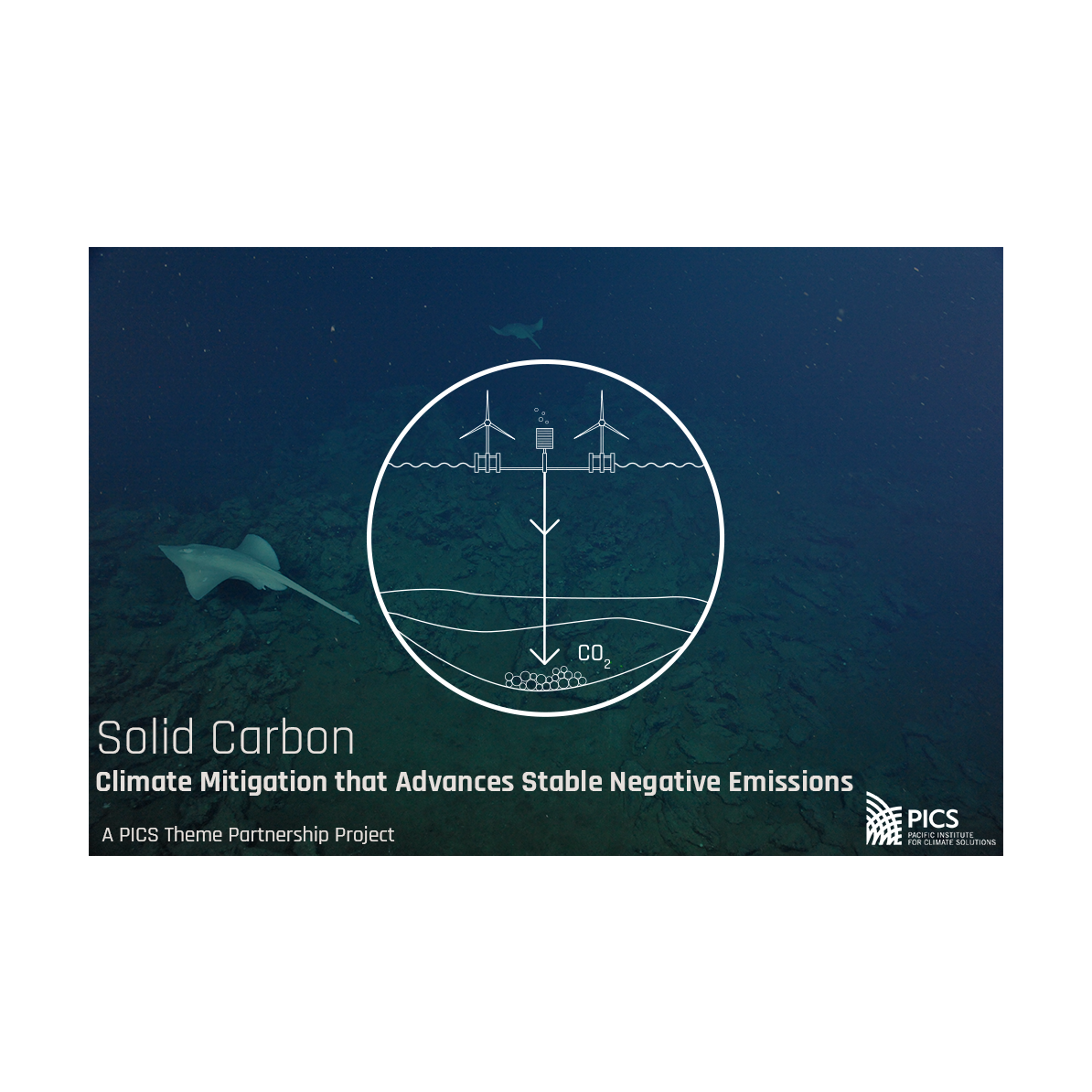
Ocean Networks Canada involved in rock-solid climate solutions: Negative emissions technology
A team of international researchers plan to turn greenhouse gas carbon dioxide into rock by permanently injecting it beneath the Earth’s ocean floor. An ambitious, new research partnership announced on September 26 by the Pacific Institute for Climate Solutions (PICS) at the University of Victoria is pursuing the project.
The $1.5 million, four-year PICS Theme Partnership called Solid Carbon: A Climate Mitigation Partnership Advancing Stable Negative Emissions gathers researchers from Canada, the United States and Europe. The team is aiming to combine state-of-the-art technologies in a way that has previously never been conceived, to deliver safe and reliable carbon dioxide (CO2) removal.
The project team includes scientists, engineers and social scientists from: the University of Victoria; Ocean Networks Canada (ONC), which is a UVic initiative and Green Marine supporter; the University of British Columbia; the University of Calgary; the University of California; Columbia University; the University of Washington; and the GEOMAR Helmholtz Centre for Ocean Research in Germany. Other project partners include K&M Technology Group, and Carbon Engineering in Squamish, British Columbia.
Kate Moran, ONC’s president and chief executive officer and Solid Carbon’s principal investigator, explains how proven technologies behind renewable energy production, carbon capture, offshore drilling and carbon mineralization will come together in this feasibility study. « The vision is to extract CO2 from the atmosphere using a direct air capture technology, developed by Carbon Engineering,” she says. “Then, using deep ocean technology powered by ocean-based wind and solar energy, inject the CO2 into the subseafloor basalt, where it will mineralize and remain permanently as rock.”
Globally, more than 90% of basalt resides in the ocean where it is widely distributed, making the technology ideal for worldwide use. One of the project’s initial focus areas is modeling and laboratory experiments to demonstrate sequestration of CO2 into ocean basalts that lie beneath ONC’s Cascadia Basin site off British Columbia’s west coast.
The four-year project began Oct. 1, 2019, with the ultimate goal of designing and delivering a globally applicable ocean-based negative emissions technology by 2050.